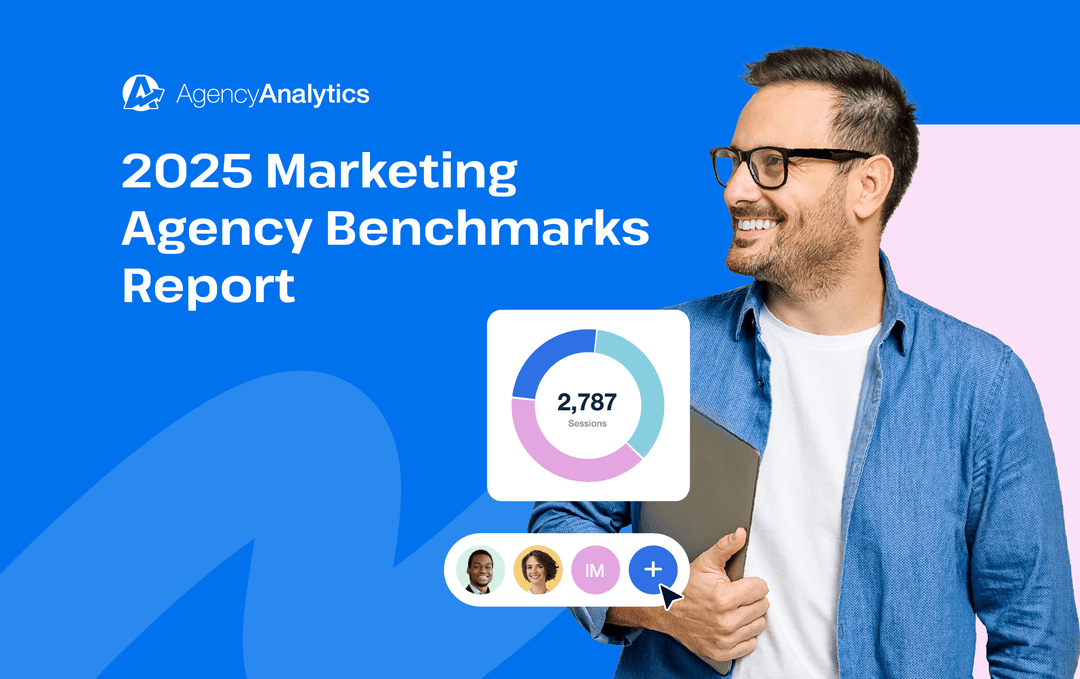Table of Contents
Table of Contents
- 1. 73% of agency leaders agree that generative AI has flipped the SEO script
- 2. AI isn’t the only thing shaking up the market
- 3. Almost 7 in 10 agency leaders expect paid advertising to gain more traction in 2025
- 4. Instagram is projected to be the most promising social platform
- 5. AI has cut content creation time for 58% of agencies
- 6. Strong relationships are still the top reason clients stick around
- 7. Most agency leaders (70%) rate client reporting as “extremely important” for retention
- 8. For the third year in a row, client acquisition outranks all other operational concerns
- 9. Even with growth pressures, the majority of agencies don’t offer incentives
- 10. Credit card payments and Net 30 terms remain standard
- Agencies are remaining solution-focused and forging ahead
7,000+ agencies have ditched manual reports. You can too.
Free 14-Day Trial220+ agency leaders. Thousands of data points. 30+ emerging trends.
2025 is one of those years that’s full of change, far more than usual. While AI has become mainstream, new challenges have been introduced, like unpredictable organic search results, content oversaturation, and rising pressure to prove value faster.
Now in its 4th edition, the Marketing Agency Benchmarks Report offers a clear, data-backed look at how agencies are responding to it all. Based on real-world insights from marketing leaders in the trenches, it highlights where teams are focusing, how they’re adapting, and where the opportunities lie for the year ahead. Our 2025 version has been fully revamped, with more in-depth insights, sharper data stories, and a cleaner, visual layout designed for quicker takeaways and smarter planning.
This article unpacks ten standout takeaways, including the rise of PPC over SEO and how AI is reshaping workflows. For an in-depth look at the collective agency experience—including top internal management challenges and the strategies leaders are using to stay competitive—explore the full report.
1. 73% of agency leaders agree that generative AI has flipped the SEO script
Generative AI has dramatically changed how people search. Just pull up any Google search—many of us now rely on those handy AI overviews to get quick answers, summaries, and even curated recommendations without clicking through.
With all these developments in motion, 73% of agency leaders agree that AI will indefinitely change the landscape as we know it. Instead of simply aiming for blue links, modern SEO now requires refreshed content strategies and innovative ways to stay visible. The rules have changed, and agencies are adjusting in real time.
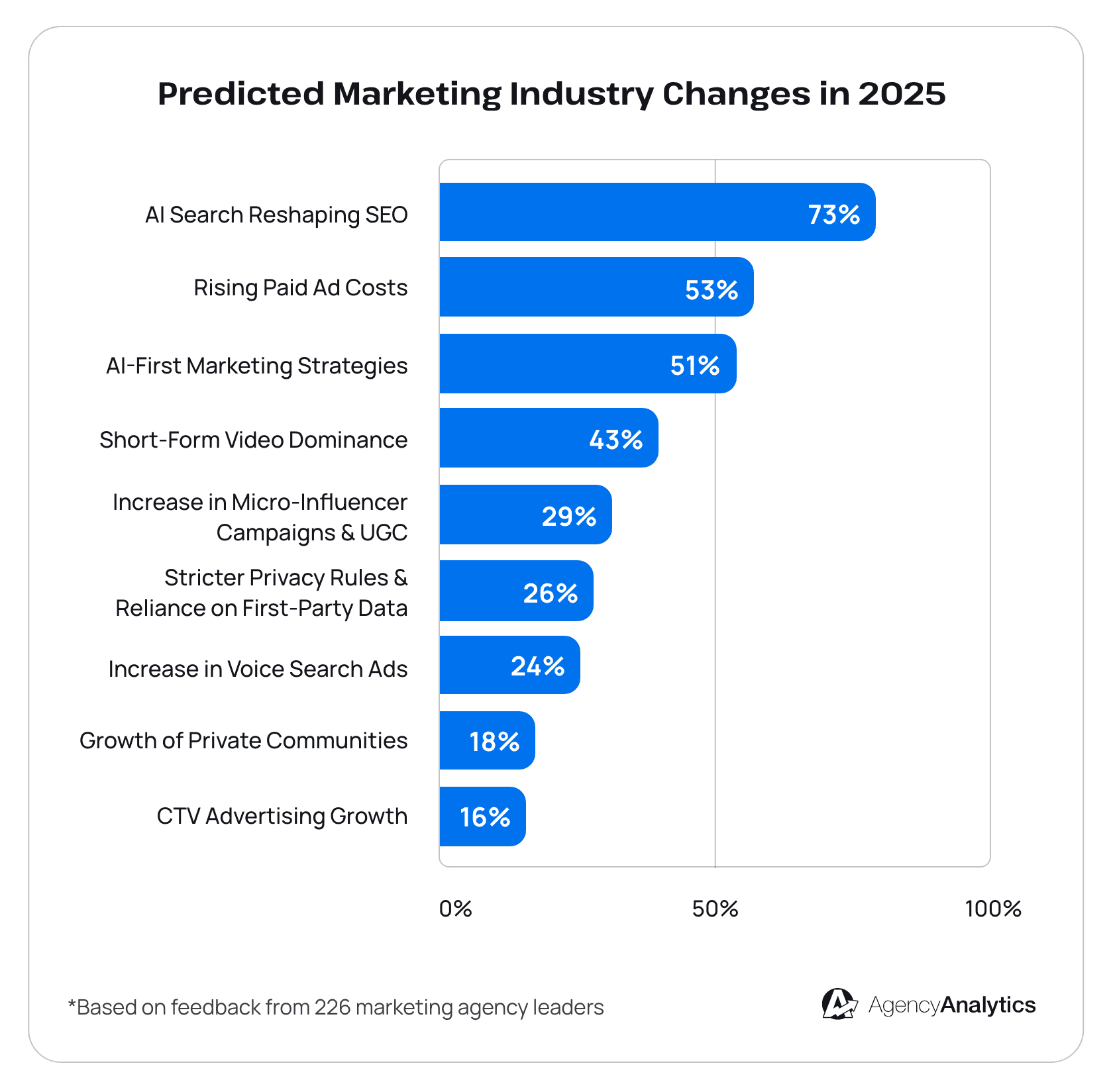
2. AI isn’t the only thing shaking up the market
While AI is a plus for users, agencies are experiencing another side of the coin. Here’s what these 220+ leaders expressed concern about:
AI-driven content saturation (57%): Given the increasing scale of AI-generated content, it’s become harder to rank on SERP results. It translates to fewer clicks, less differentiation, and a higher risk of redundant content.
Google updates reshaping search results (50%): Aside from AI Overviews, there are other emerging developments like conversational search and evolving SERP layouts. This means there’s less predictability from traditional SEO practices.
Economic and geopolitical uncertainty (46%): With market conditions in flux, clients could become more risk-averse and selective with budgets. It puts added pressure on agencies to deliver results in a high-stakes, complex environment.
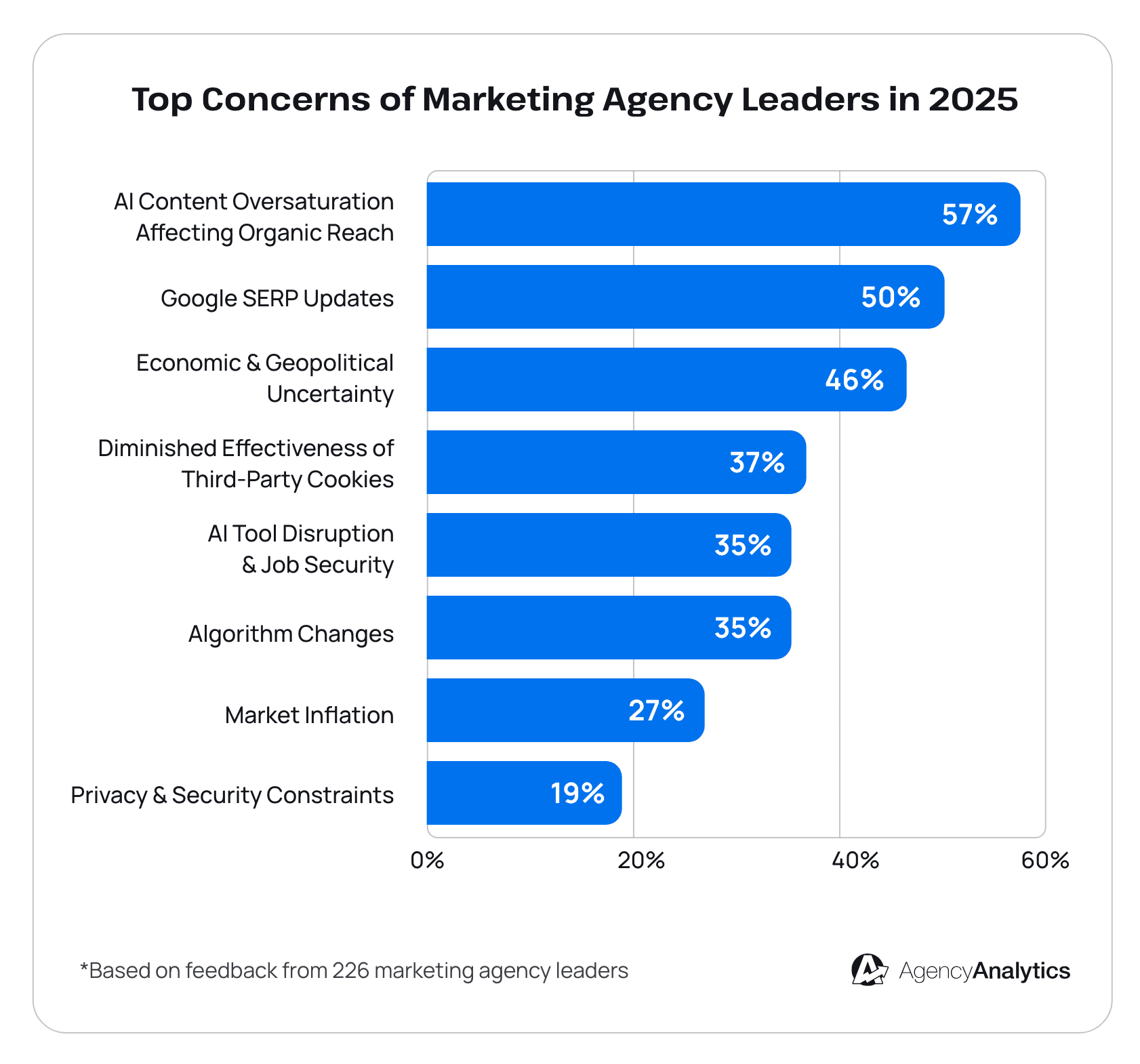
To put it simply, what worked last year might not work now. Even clients are seeing the changes firsthand, but it doesn’t stop them from asking tough questions.
But instead of stepping back, most agency leaders see this as a turning point. They’re doubling down on strategic thinking, adaptability, and higher-impact work. And that’s what will set their businesses apart.
While AI tools are streamlining content creation, customer segmentation, and even ad optimization, the real challenge lies in maintaining authenticity and human connection. In 2025, we expect AI to become even more embedded in our workflows, but the agencies that will stand out are those that strike the right balance between automation and human creativity.
Deanna Miller, Co-Founder & Director of Marketing, Stark Social
3. Almost 7 in 10 agency leaders expect paid advertising to gain more traction in 2025
Agencies are still expected to deliver results, even as AI shakes things up or algorithm changes derail what used to work. That’s just the nature of the business.
In response, many are turning to channels that offer more control and faster returns. Paid advertising is leading the way, with 68% of agency leaders voting it the most promising channel for 2025.
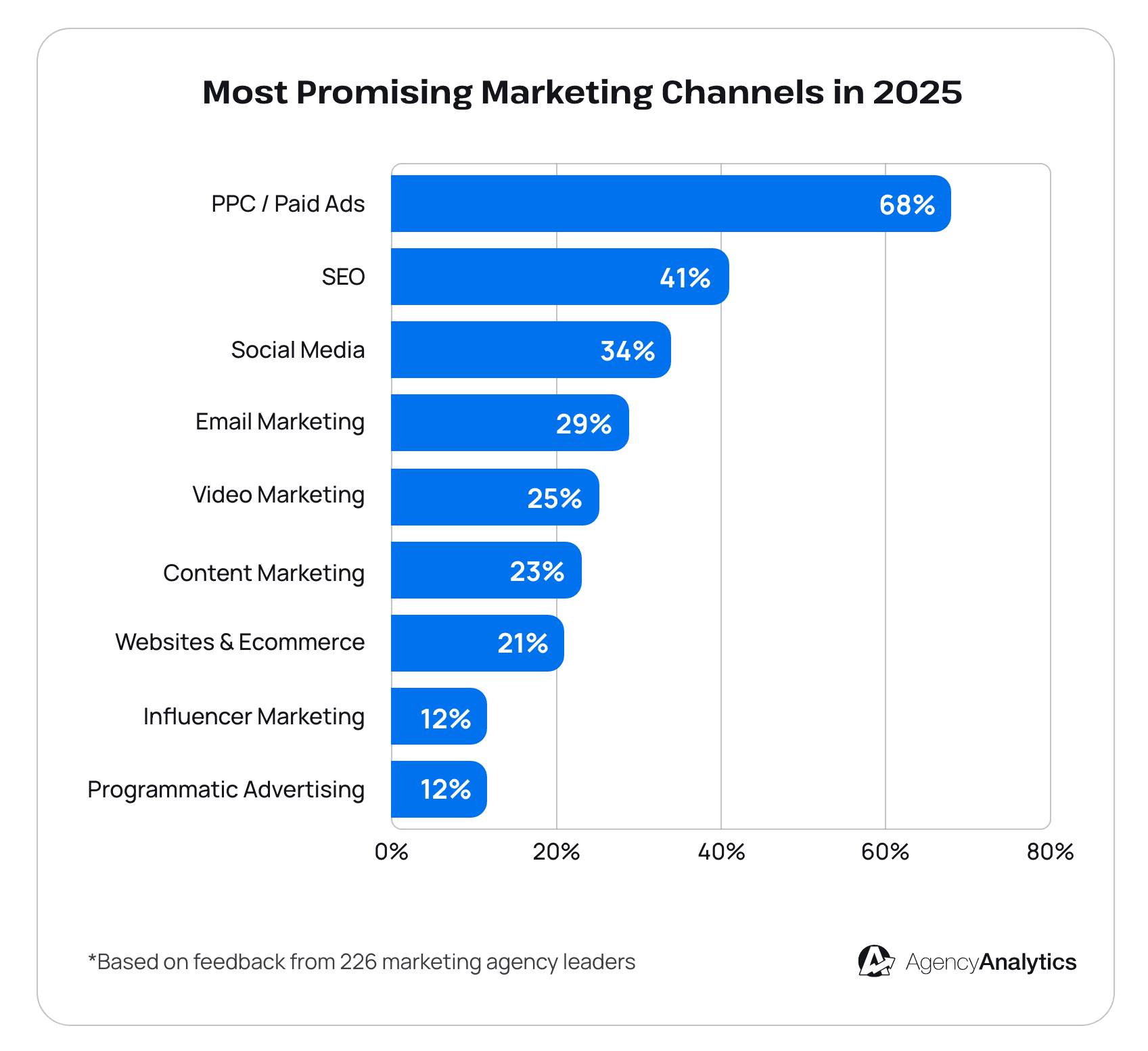
Here’s another complementary stat–an overwhelming 89% also named paid advertising as their core service for the year ahead. What’s so significant about it? Well, it’s a stark contrast to last year’s findings, where SEO and Web Design shared the top spot. It reflects a broader shift in the market, showing that:
Agencies are gravitating toward performance-based services with more predictable outcomes.
Clients are asking for visible, short-term results in a climate where organic growth feels slower and less reliable.
In uncertain times, control and clarity matter. And for many agencies, PPC delivers just that (or at least something close to it).
4. Instagram is projected to be the most promising social platform
According to 65% of surveyed leaders, Instagram takes the lead, for the second year in a row. Facebook and YouTube aren’t far behind, with 50% also naming them as strong contenders for increased investment in 2025.

It doesn’t necessarily mean one should be prioritized over the other. Platform choice depends heavily on a client’s niche, intended audience, and content strategy. For example, a B2C brand that’s targeting Gen Z users might find stronger traction on Instagram. On the other hand, an education brand with long-form content may perform better on YouTube.
Regardless of platform choice, there’s one common thread: A shift toward visual-first storytelling. Agencies are prioritizing channels that support immersive content, short-form video, and creative formats that capture attention in seconds.
5. AI has cut content creation time for 58% of agencies
While AI adoption has brought some unique challenges, it’s also led to workflow gains. More than half of agencies (58%) say it’s helped cut down content creation time, making it easier to meet deadlines, scale output, and focus on other key deliverables.
While early concerns around accuracy and plagiarism haven’t disappeared, the output has noticeably improved. This includes smoother text phrasing, better tone alignment, and stronger drafts that require less editing.
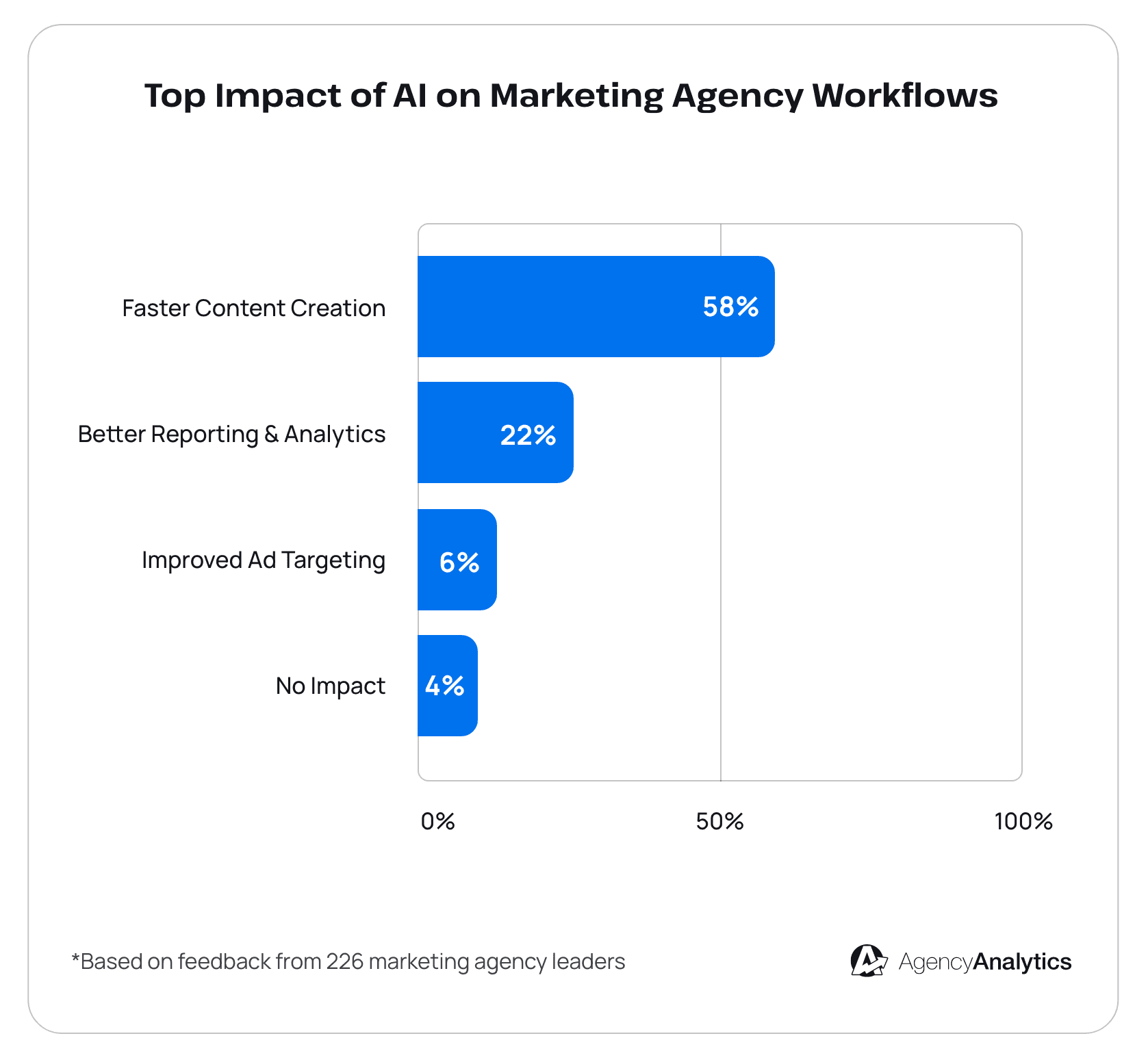
Time-wise, 42% of agencies have reclaimed between 5 to 10 billable hours per week. It’s a meaningful win that empowers teams to focus more on other high-level deliverables outside of production.
As AI becomes more embedded in daily workflows, though, it’s raising a new question: Who should own and manage it internally? After all, it’s becoming less of a side tool and more of a core function across departments. To keep things in check, some agencies have formed internal AI councils to oversee adoption and ensure proper implementation across teams.
We have developed AI guidelines and created an AI Council. Additionally, we are looking at our processes to see how we can improve our client outcomes using AI. This is a major part of our OKR process. If agencies don't stay up to date and create ethical guidelines, they might be left behind.
Tim Akers, Founder, Akers Digital
To gain a macro perspective, we asked leaders whether they’re considering AI-specific hires in 2025–the answer might surprise you. Check it out in the full Marketing Agency Benchmarks Report.
6. Strong relationships are still the top reason clients stick around
Here’s a stat that stood out: 81% of agency leaders agree that strong client relationships are the biggest factor in retaining accounts. In fact, it ranks above effective communication (67%) and campaign performance (49%).
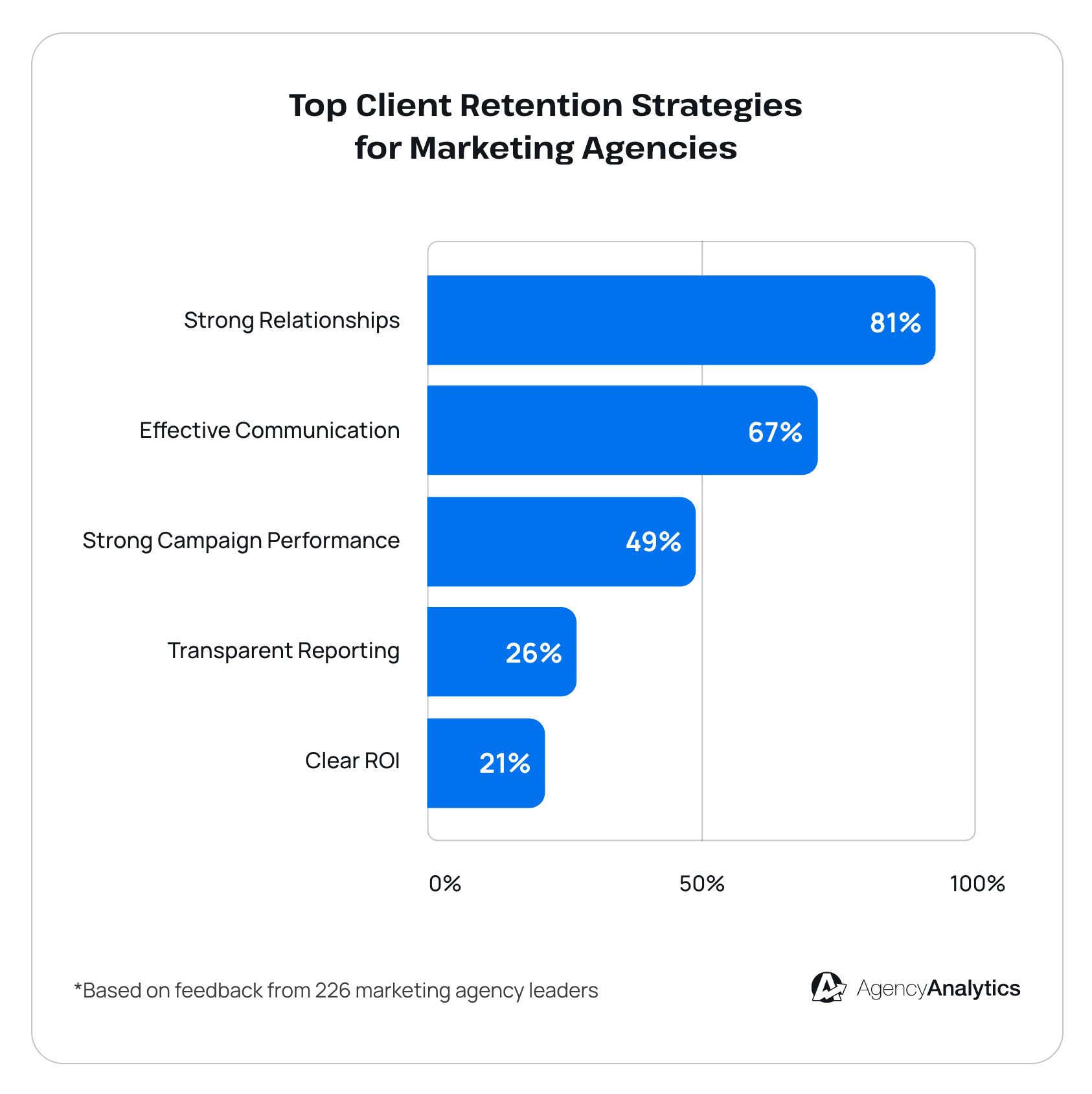
While relationships lead the way, performance and communication still carry weight. After all, clients are unlikely to stick around if results consistently fall short.
The most effective approach is to treat all three as part of the same foundation. Show genuine interest, have regular touchpoints, and generate data-backed results that clients will trust.
7. Most agency leaders (70%) rate client reporting as “extremely important” for retention
While relationships drive loyalty, reporting keeps transparency on the table. In fact, 7 in 10 agency leaders rate it as “extremely important” for retention.
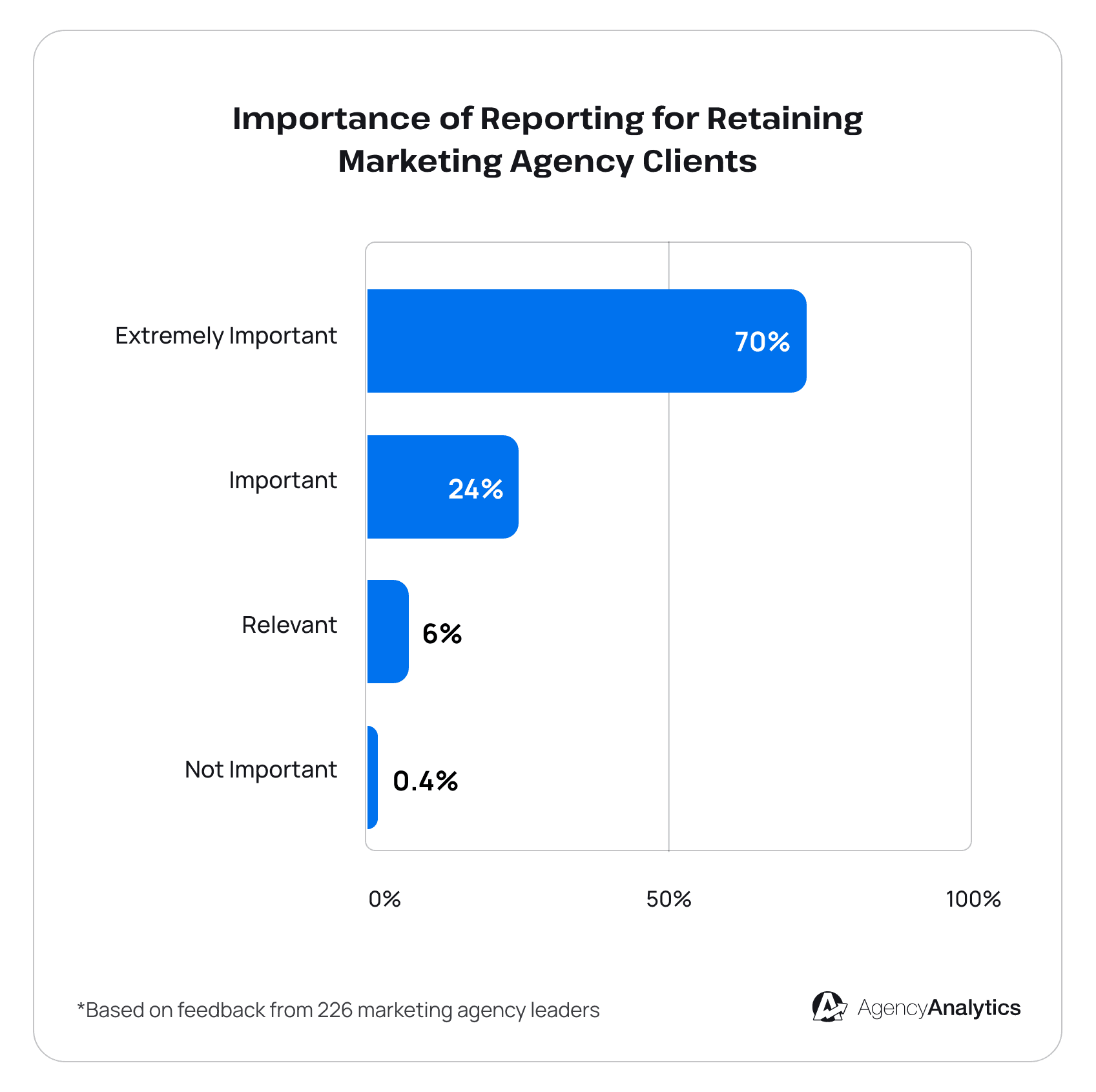
When reporting is done well, it reinforces value, highlights tangible results, and opens the door to strategic conversations. That’s why 7,000+ agencies use our platform to:
Access strategy-driven, visual dashboards that show real-time performance.
White-label reports, maintaining brand consistency and professionalism.
Generate AI-powered insights, access first-party data benchmarks, and more.
At the end of the day, reporting is more than sharing data. It’s about helping clients see the bigger picture and stay invested in what comes next.
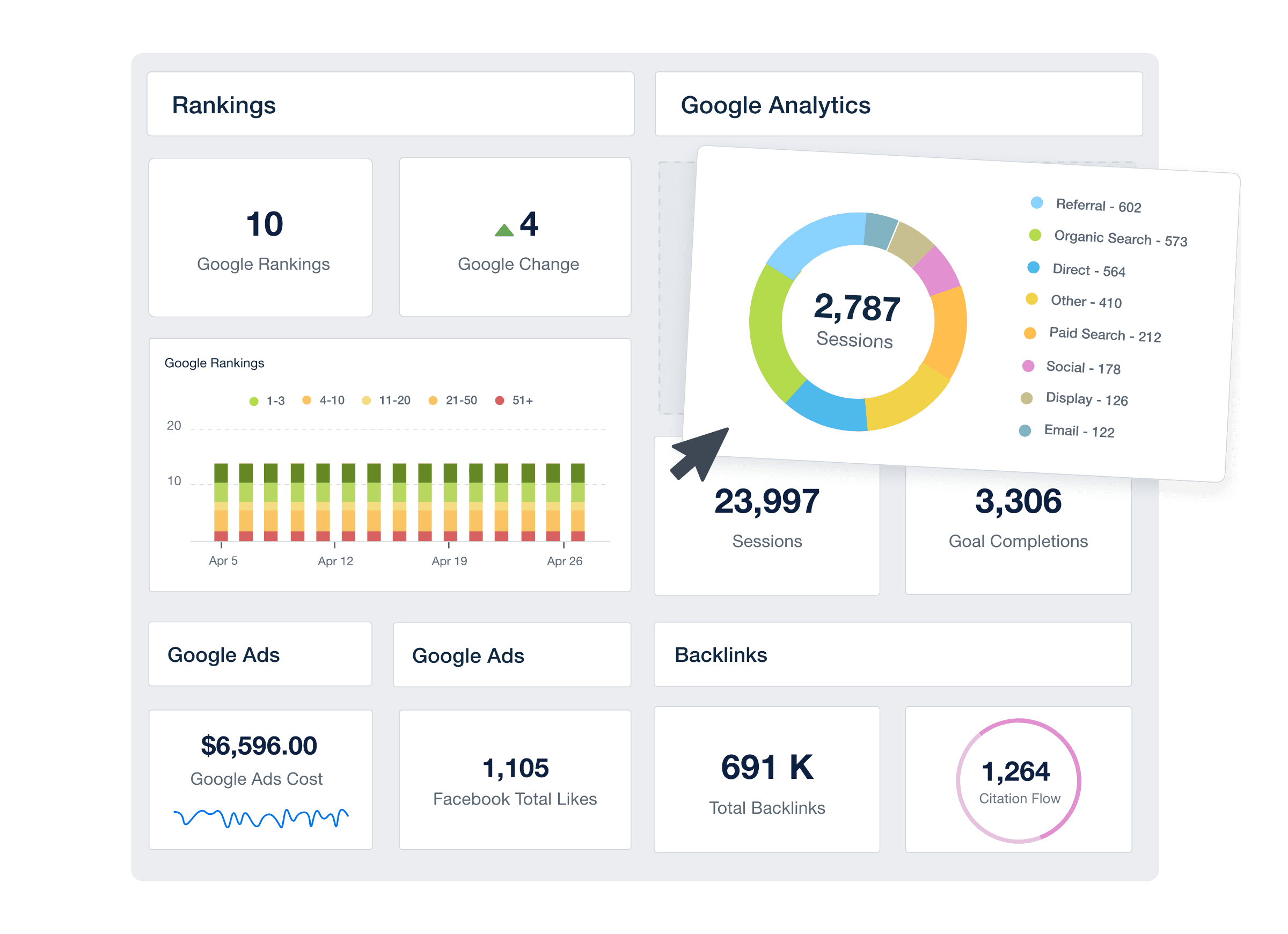
Automate data collection across 80+ platforms and counting. Streamline the entire reporting process with AgencyAnalytics–try it free for 14 days.
8. For the third year in a row, client acquisition outranks all other operational concerns
Client acquisition continues to top the list of pain points. According to 34% of leaders, bringing in new clients is the most challenging part of business operations, even above managing time and improving profit margins.
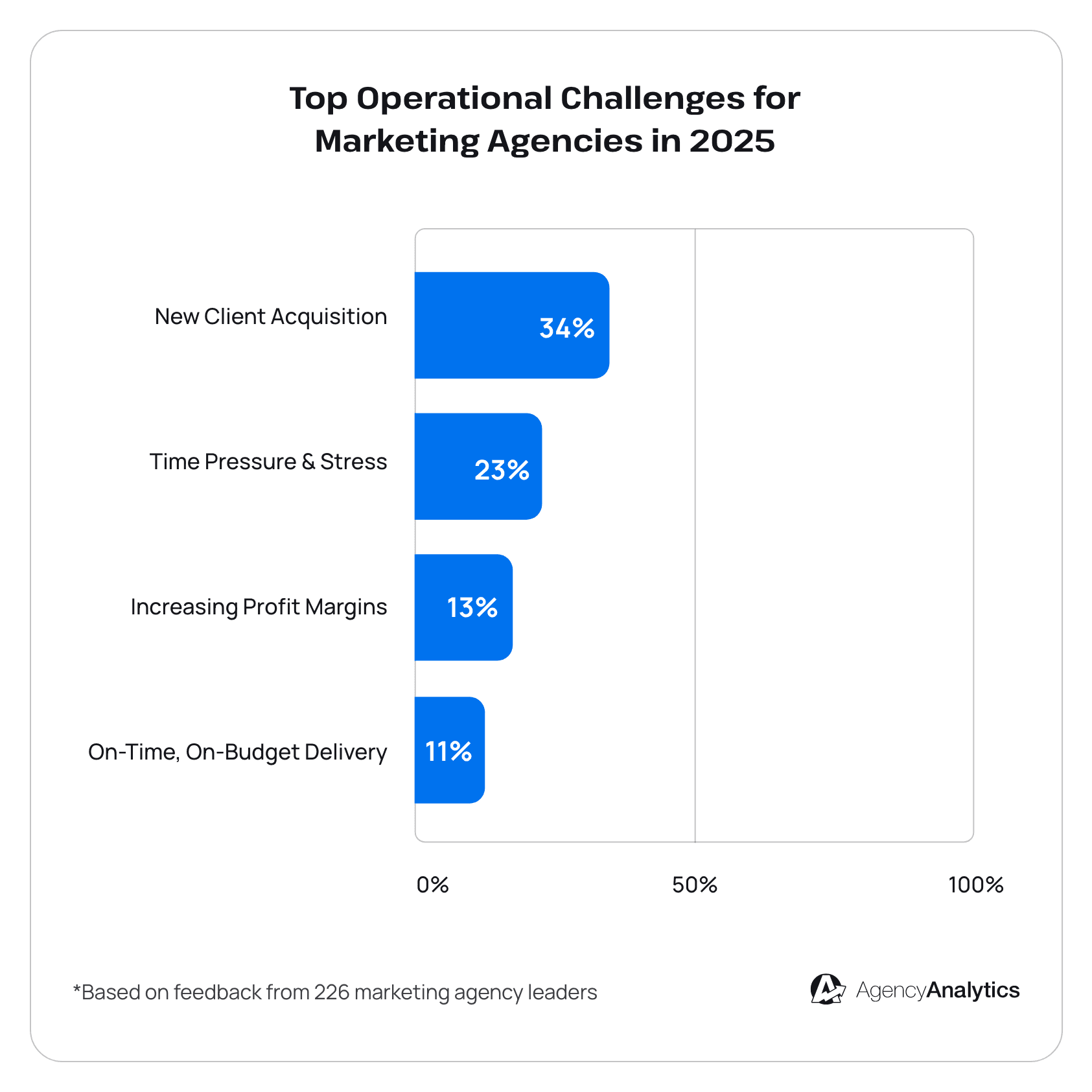
This acquisition challenge is also reflected in the average pitch win rate. According to our research, 34% of agencies convert 31% to 50% of the pitches they deliver. It may seem like a solid middle ground, but it means there’s roughly a one-in-three chance that a pitch turns into a signed client.
While it’s tough to secure new business, the key is staying consistent, data-driven, and relationship-focused.
9. Even with growth pressures, the majority of agencies don’t offer incentives
Although winning new clients remains a tough challenge, 67% of agencies aren’t relying on discounts to bring in business.
Among the minority that do, 24% offer volume-based incentives for larger retainers, and another 16% provide benefits for prepaid, long-term contracts. These findings also reflect a broader mindset: Agencies know the value they bring to the table, and they’re not interested in cheapening it.
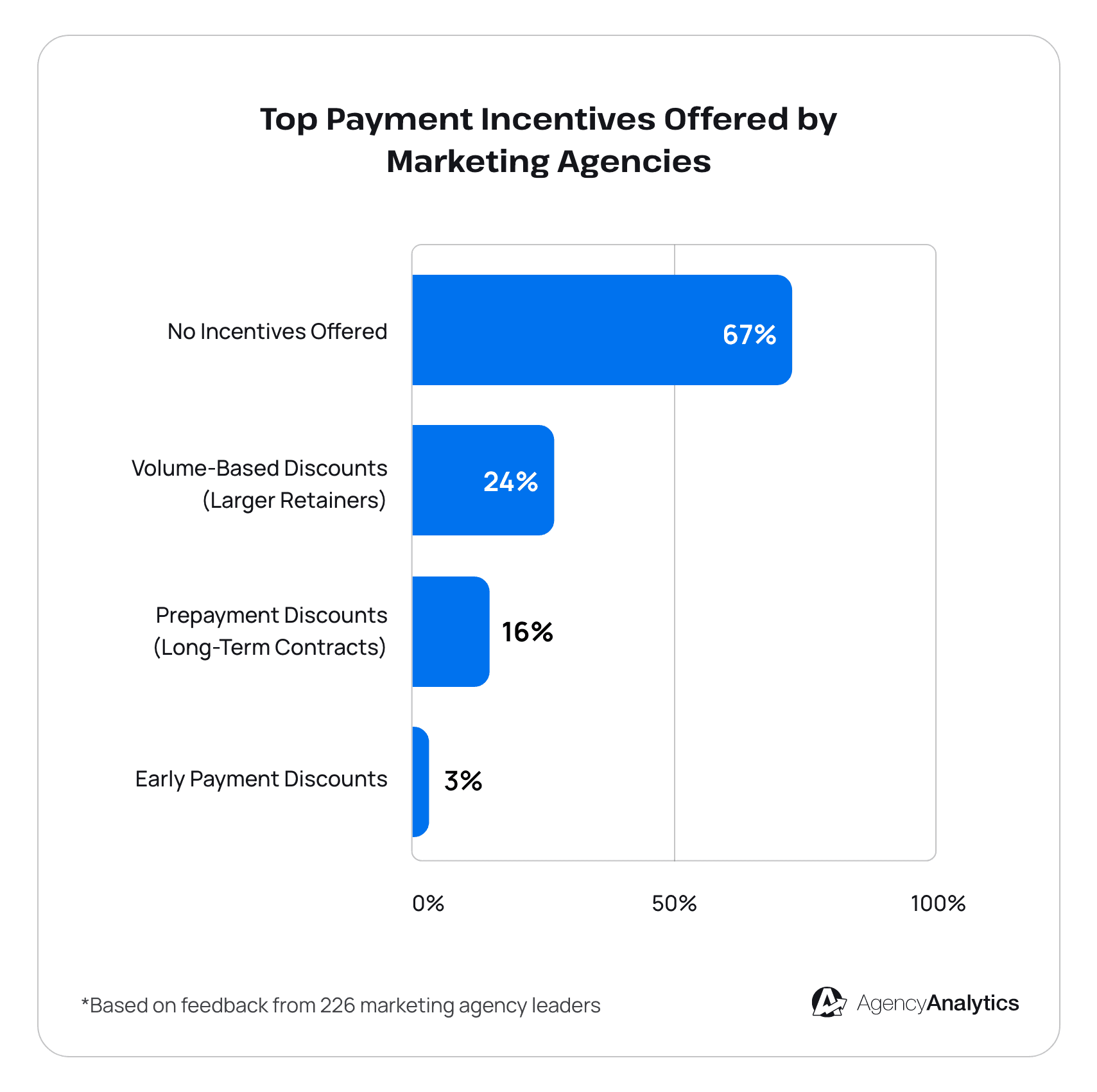
There’s an upside to this, too. By staying firm on pricing, they’re more likely to attract serious, value-aligned clients who are ready to invest in long-term results.
10. Credit card payments and Net 30 terms remain standard
Most agencies offer a range of payment options, including ACH transfers and checks.
Unsurprisingly, though, credit cards remain the most popular method, preferred by 86% of surveyed agencies. This points to a clear preference for convenience, faster processing, and smoother billing workflows.
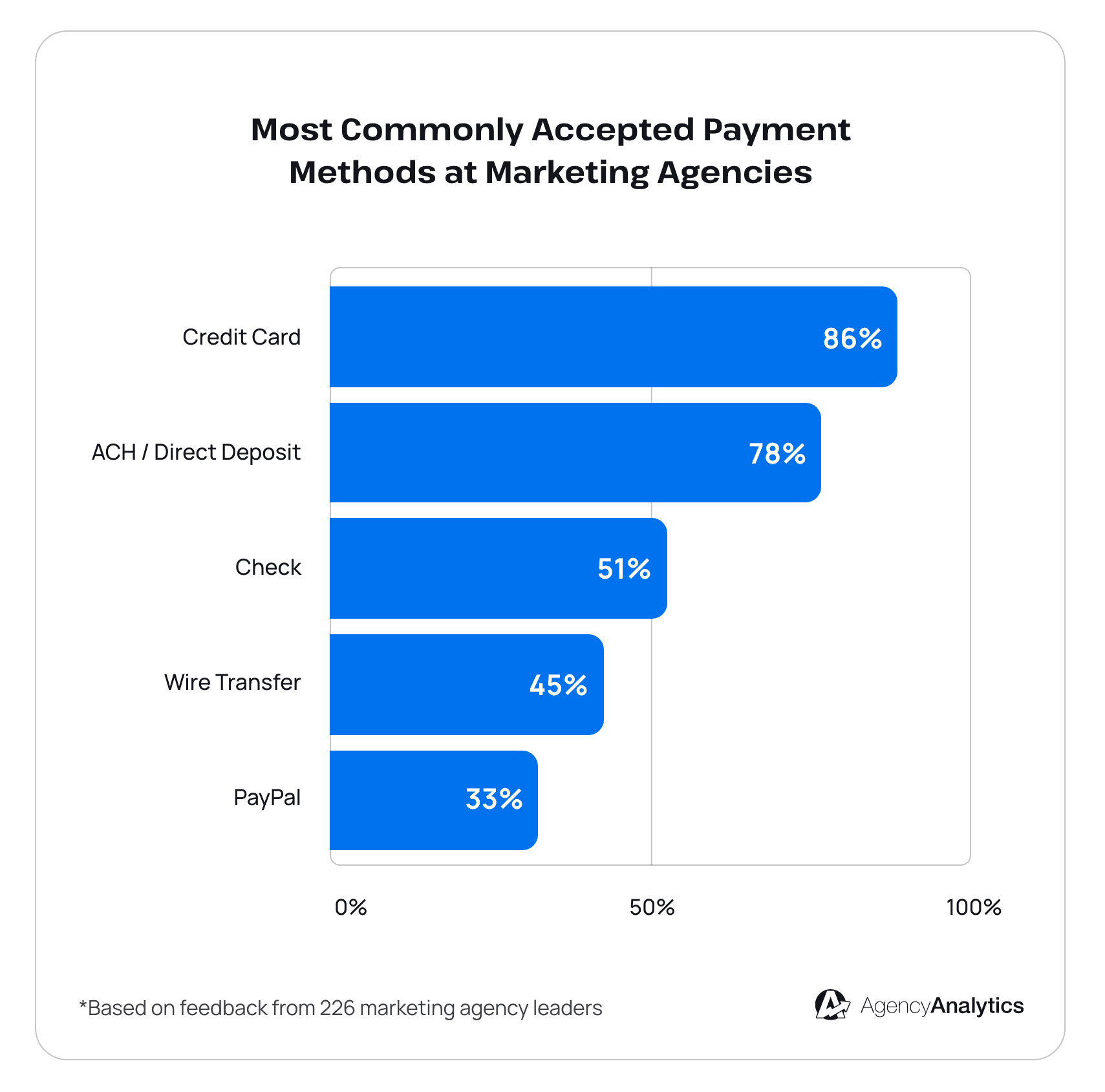
When it comes to payment terms, Net 30 is the most commonly offered, with 46% of agencies listing it as their default option. Of course, even with clearly defined guidelines, late payments still happen.
As outlined in our in-depth findings, most agencies take action when needed. Some enforce stricter policies, while others lean toward a more flexible, client-friendly approach.
Agencies are remaining solution-focused and forging ahead
In a relatively short time, Generative AI has reshaped search visibility, trickling down into SEO results and altering how agencies prove value. It’s forced teams to move quickly, adjust strategies on the fly, and pivot more often than they’re used to. And that’s alongside other mounting pressures, like winning new business, protecting margins, and keeping existing clients engaged.
Still, agencies have remained steadfast through it all, adapting to an environment that looks nothing like it did a year ago. By making targeted moves, like leaning into performance-driven channels and tightening service focus, they’re continuing to move forward.
As we’ve seen year after year, agencies continue to do what they do best: Evolve under pressure and find new ways to deliver value. It’s this mindset—resilient, resourceful, and relentlessly client-focused—that keeps them moving forward, no matter what changes come next.
Access 30+ real-world insights from over 220 leaders by downloading the Marketing Agency Benchmarks Report today.

Written by
Faryal Khan is a multidisciplinary creative with 10+ years of experience in marketing and communications. Drawing on her background in statistics and psychology, she fuses storytelling with data to craft narratives that both inform and inspire.
Read more posts by Faryal KhanSee how 7,000+ marketing agencies help clients win
Free 14-day trial. No credit card required.


